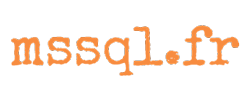In the first two articles of this series about PostgreSQL privileges, we reviewed how to create roles, grant them privileges to database objects, and how object ownership is an important aspect in managing access and control within the database.
When it comes to managing what roles can access or modify an existing object, ownership is the ultimate privilege. Because PostgreSQL privileges work from a Principle of Least Privilege mindset, the owner of an object (table, trigger, function, procedure, etc.) needs to GRANT privilege to other roles.
We discussed how this can be done manually with a GRANT command each time

